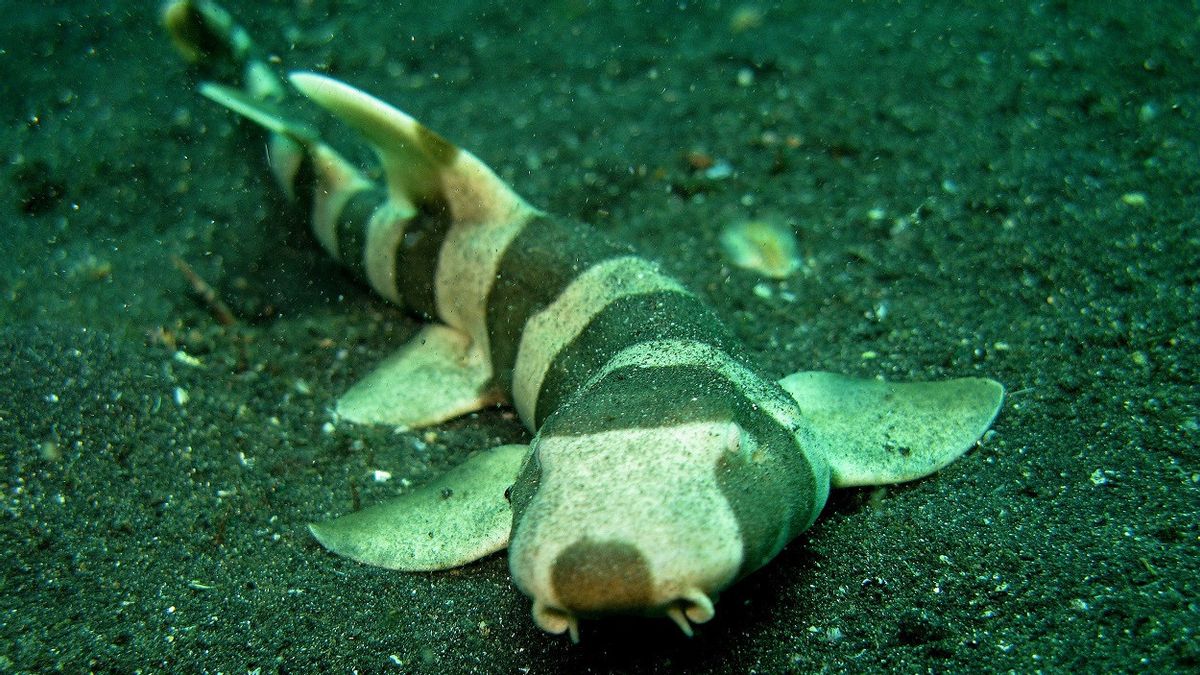JAKARTA - Not always popularity has a positive impact on animals. For example, as experienced by the bamboo shark. Popular among fish collectors and lovers of exotic food, this shark is endangered.
Its eye-catching body color with white stripes and extra long tail, bamboo sharks attract fish collectors to fill their aquariums. Meanwhile, exotic culinary connoisseurs are willing to pay dearly for the delicacy of this shark meat.
This condition made fishery researchers concerned who then tried to create a conservation program in the Gulf of Thailand. Several young bamboo sharks were released at the bottom of the Gulf of Thailand, in hopes of helping this species off the International Union for Conservation of Nature's red list of 'endangered'.
"We dive to the bottom of the sea to release the fish in a safe area so they have a better chance of survival, than releasing them on the surface of the water like most other animals," said fisheries official Udom Krueniam.

"If we release them to the surface of the water, there's more of a chance they'll be eaten by bigger fish or swim out of cover."
In early June, researchers released about 40 brown-banded bamboo sharks, aged between 2-3 months, on a specially made artificial reef and placed at a depth of 18 meters or about 60 feet.
Besides originating from the Gulf of Thailand, the brown-banded bamboo shark species is also known to be found in other parts of Southeast Asia, Japan and northern Australian waters.
The bamboo shark is one of the smallest marine predators, growing to a maximum length of about 1.2 meters (4 feet) and not threatening humans. Actively foraging at night, bamboo sharks use their tiny teeth to catch or destroy prey.
The researchers hope the released sharks will settle in the new home the researchers created, where they will initially be protected by artificial coral and hopefully breed.

In addition to the Gulf of Thailand, the conservation process is also carried out at a research facility on land located in Panida BuaLangka. The researchers helped the process of hatching bamboo shark eggs.
Using special scissors, they carefully cut the end of the egg sheath to help release the baby shark. Udom explained, the zinc hatching process is carried out in aquariums, not in the open sea where they are vulnerable to other predators, to protect this species.
Udom said, from last year's bamboo shark egg hatching project, his party managed to release many baby sharks into the ocean. According to his records, so far this conservation project has succeeded in incubating, caring for and releasing more than 200 bamboo sharks into the Gulf of Thailand.
The English, Chinese, Japanese, Arabic, and French versions are automatically generated by the AI. So there may still be inaccuracies in translating, please always see Indonesian as our main language. (system supported by DigitalSiber.id)












